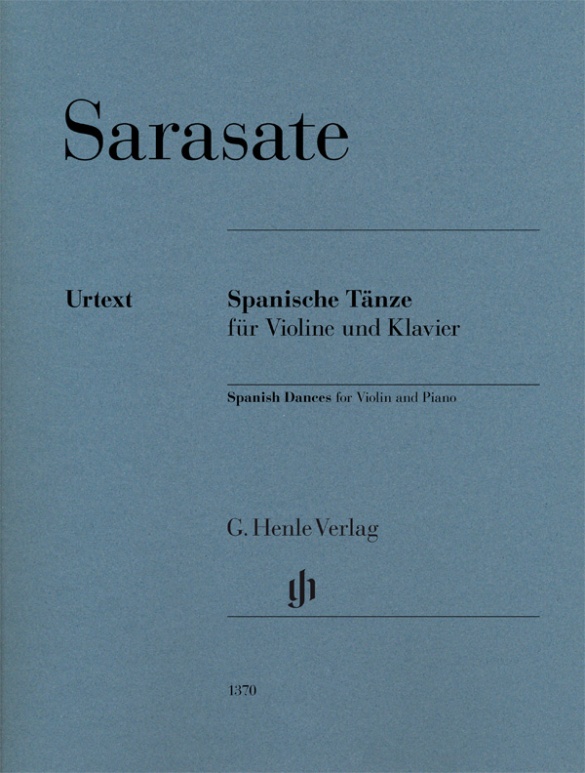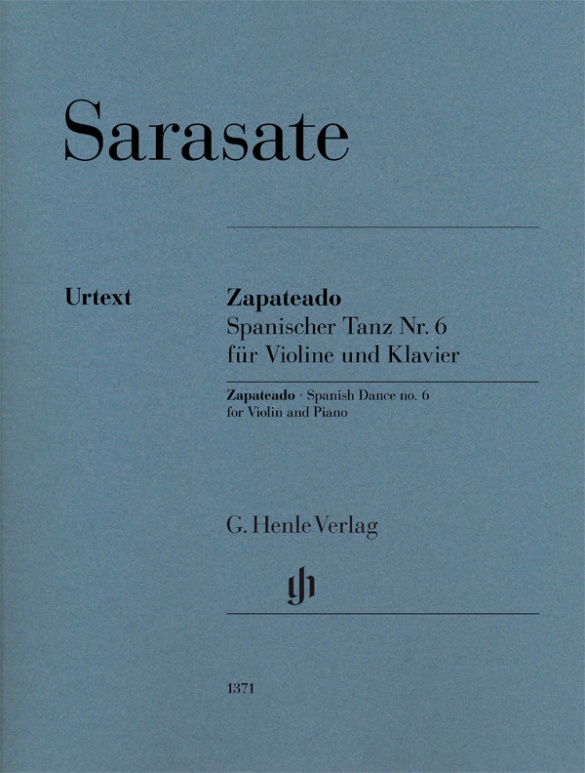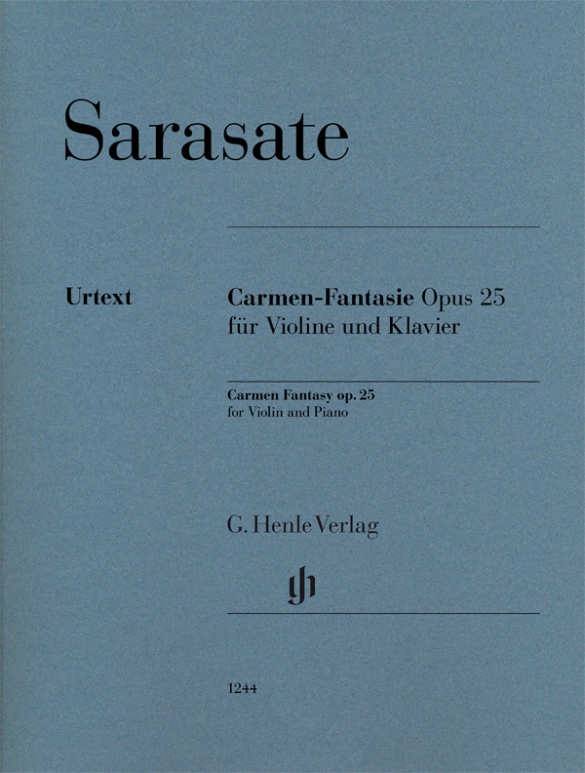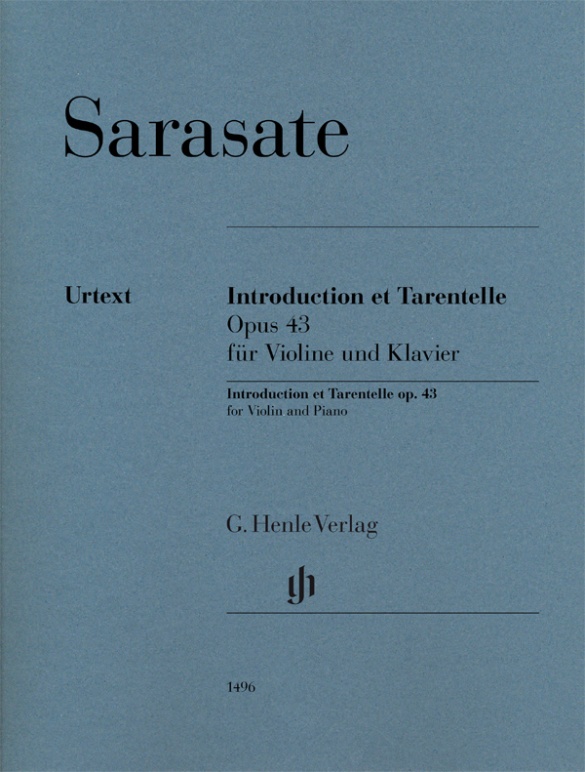

Pablo de Sarasate
Introduction et Tarentelle op. 43 for Violin and Piano
Elements of Spanish folklore dominate in Sarasate’s compositions, but several prominent works also use typical melodies and dances of other countries. Alongside the “Zigeunerweisen”, the “Introduction et Tarentelle” numbers among the most popular representatives of this group: Sarasate erected here an enduring monument to the tarantella, the fiery southern Italian dance. The version for violin and piano was composed first in 1899; a year later, Sarasate made the version for violin and orchestra. For this first Urtext edition, all of the preserved autograph sources were consulted. Augustin Hadelich undertook the marking of the virtuoso violin part for G. Henle Publishers.
Content/Details
About the Composer
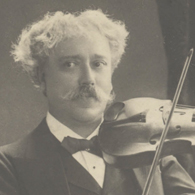
Pablo de Sarasate
A violinist and composer from Spain. During his childhood he already rose to become a celebrated virtuoso whose precise playing was described as brilliant and having a beautiful tonal quality. He was the dedicatee of world-famous violin concerti including Max Bruch’s Violin Concerto No. 2, op. 44. He himself wrote works for orchestra, including fantasies on operatic themes, as well as salon and chamber music. His musical language is characterized by folk elements.
| 1844 | Born in Pamplona on March 10. His father, the director of a military band, fosters his musical education. A child prodigy, he makes his debut as a violinist at approximately eight years of age. He studies in Madrid with Manuel Rodríquez. |
| 1856 | With the support of the Spanish court he studies violin at the Paris Conservatoire under Jean-Delphin Alard and harmony with Napoléon-Henri Reber. |
| 1857 | He is awarded the Conservatoire’s first prize in violin. |
| 1858 | He wins the Conservatoire’s first prize in harmony. |
| from 1860 | Up to 200 concerts per year take him throughout Europe, Russia, the United States, and South America. His repertoire includes the violin concerti of Beethoven and Mendelssohn. He also increasingly focuses on chamber music. |
| 1908 | Dies in Biarritz on September 20. |
About the Authors

Peter Jost (Editor)
Dr. Peter Jost, born in 1960 in Diefflen/Saar, read musicology, German and comparative studies at Saarland University in Saarbrücken. He did his PhD in 1988 with a thesis on Robert Schumann’s Waldszenen.
From November 1991 to April 2009 he was a research associate at the Richard Wagner Complete Edition in Munich, and since May 2009 has been an editor at G. Henle Publishers. His Urtext editions comprise predominantly French music of the 19th and 20th centuries, including works by Lalo, Saint-Saëns and Ravel.
Product Safety Informations (GPSR)

G. Henle Verlag
Here you can find the information about the manufacturer of the product.G. Henle Verlag e.K.
Forstenrieder Allee 122
81476 München
Germany
info@henle.de
www.henle.com
Henle’s uitgave onderscheidt zich niet alleen door de grondige editie en een overzichtelijke vormgeving: de afzonderlijke solopartij is van betekening voorzien door de gewaardeerde violist Augustin Hadelich en voor het voorwoord tekende Sarasate-biografe Maria Nagore Ferrer.
de nieuwe muze, 2022Again, G. Henle’s edition is outstanding, with an urtext violin part in addition to a very helpful violin part fingered and bowed by Augustin Hadelich. The overall editor is Peter Jost, with an excellent Preface written by María Nagore Ferre.
Stringendo, 2022recommendations
autogenerated_cross_selling
Further editions of this title
Further editions of this title


